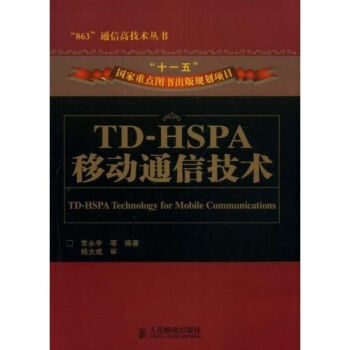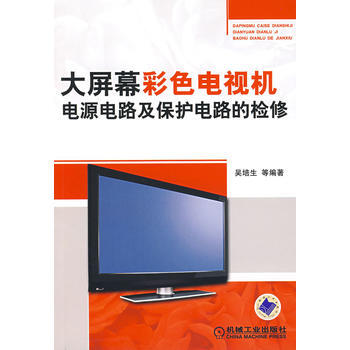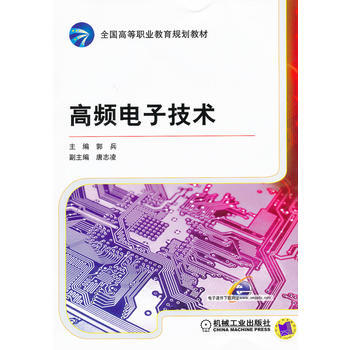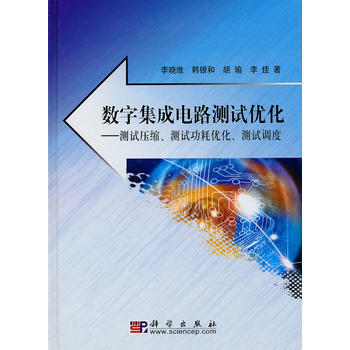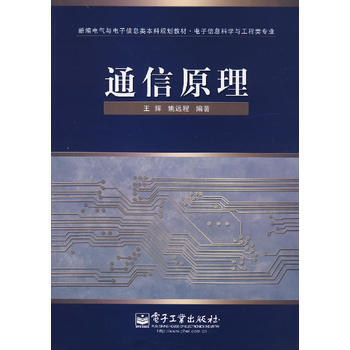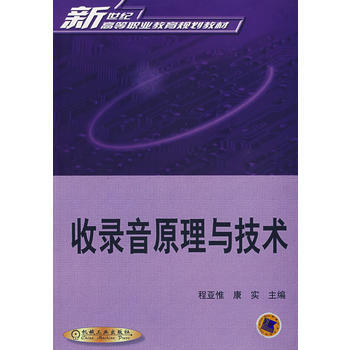

具體描述
基本信息
書名:衛星通信導論(英文版)/國防電子信息技術叢書
定價:48.00元
作者:王麗娜
齣版社:電子工業齣版社
齣版日期:2017-10-01
ISBN:9787121327131
字數:
頁碼:209
版次:1
裝幀:平裝
開本:16開
商品重量:0.4kg
編輯推薦
內容提要
《衛星通信導論(英文版)/國防電子信息技術叢書》除瞭包含基礎理論和技術的相關內容外,力求充分反映衛星通信的新技術、新發展和新成果。《衛星通信導論(英文版)/國防電子信息技術叢書》可供高等院校通信工程專業、電子信息專業本科生閱讀,旨在帶領學生瞭解和掌握衛星通信的相關知識以及衛星通信領域的新技術和新發展,引導學生學習衛星通信的興趣。
《衛星通信導論(英文版)/國防電子信息技術叢書》的編寫工作得到瞭北京科技大學和國傢自然科學基金項目的支持。
目錄
Chapter 1 Introduction
1.1 A Brief History of Satellite Communications
1.1.1 International Activities
1.1.2 Domestic Activities
1.2 Characteristics of Satellite Communications
1.3 System Elements
1.3.1 Space Segment
1.3.2 Ground Segment
1.4 Satellite Elements
1.4.1 CommunicatioSubsystem
1.4.2 Antennas Subsystem
1.4.3 Attitude and Orbit Control Subsystem
1.4.4 Telemetry, Tracking, Command and Monitoring Subsystem
1.4.5 Power Subsystem
1.5 Types of Satellite Orbit
1.5.1 Low Earth Orbit (LEO)
1.5.2 Medium Earth Orbit (MEO)
1.5.3 High Earth Orbit (HEO)
1.5.4 Geostationary Earth Orbit (GEO)
1.6 Use of Frequencies
1.7 Summary
References
Problems
Chapter 2 Orbital Mechanics
2.1 Orbital Theory
2.1.1 Equations of Satellite's Orbit
2.1.2 Kepler's Three Laws of Plaary Motion
2.1.3 Orbit of a Satellite
2.1.4 Determining the Satellite Locatioithe Orbit
2.1.5 Orbital Elements
2.2 Determining Look Angle
2.2.1 The Subsatellite Point
2.2.2 ElevatioAngle Calculation
2.2.3 Azimuth Angle Calculation
2.2.4 Specializatioto Geostationary Satellites
2.2.5 Visibility Test
2.3 Orbital Perturbations
2.3.1 Longitudinal Changes: Effects of the Earth's Oblateness
2.3.2 InclinatioChanges: Effects of the Suand the Moon
2.4 Orbital Determination
2.5 Orbital Effects iCommunications Systems Performance
2.5.1 Doppler Shift
2.5.2 Range Variations
2.6 Summary
References
Problems
Chapter 3 Earth Stations
3.1 Earth StatioElements
3.2 Site Selectioand Layout of Earth Stations
3.2.1 Site Selectioof Earth Stations
3.2.2 Layout of Earth Stations
3.3 Earth Stations and Ground Antennas
3.3.1 Antennas for Fixed Satellite Services
3.3.2 Antennas for Broadcast Satellite Services
3.3.3 Antennas for Mobile Satellite Services
3.3.4 Antennas for Store and Forward (Machine to Machine Service)
3.3.5 Antennas for TTC&M;
3.4 Summary
References
Chapter4 Satellite Link Design
4.1 Introduction
4.2 Basic TransmissioTheory
4.3 System Noise Temperature and G/T Ratio
4.3.1 Noise Temperature
4.3.2 Calculatioof System Noise Temperatures
4.3.3 Noise Figure and Noise Temperature
4.3.4 G/T Ratio for Earth Stations
4.4 Link Design
4.4.1 Desigof Downlinks
4.4.2 Desigof Uplinks
4.5 Summary
References
Problems
Chapter 5 Modulatioand Multiple Access
5.1 Introduction
5.2 Analogue Amplitude Modulation
5.3 Analogue Frequency Modulation
5.4 Digital Modulation
5.4.1 Filtering and Bandwidth Considerations
5.4.2 Binary Phase Shift Keying (BPSK)
5.4.3 Quadrature Phase Shift Keying (QPSK)
5.4.4 Derivative PSK ModulatioSchemes
5.5 Practical Satellite Modems
5.6 Multiple Access Methods
5.6.1 Network Architectures
5.6.2 Traffic Multiplexing
5.7 Multiple Access, and Assignment Strategies
5.7.1 Frequency DivisioMultiple Access (FDMA)
5.7.2 Time DivisioMultiple Access (TDMA)
5.8 Satellite-Switched TDMA and Onboard Processing
5.9 Spread Spectrum and Code DivisioMultiple Access (CDMA)
5.9.1 Spread Spectrum for Satellite Communications
5.9.2 Code DivisioMultiple Access (CDMA)
5.10 Packet Access Techniques
5.10.1 ALOHA Schemes
5.10.2 Enhancements to ALOHA
5.11 Hybrid Access Techniques, and Comparisons
5.12 Summary
References
Problems
Chapter 6 Error Control
6.1 Introduction
6.2 Channel Characteristics
6.2.1 Additive White GaussiaNoise (AWGN)
6.2.2 Doppler Effect
6.2.3 Multipath and Shadowing
6.2.4 Other Considerations
6.3 Channel Capacity
6.4 Coded Systems
6.4.1 Types of Code
6.4.2 Types of Channel
6.5 Error DetectioStrategies
6.6 Implementatioof Error DetectiooSatellite Links
6.7 Forward Error Correction
6.8 Convolutional Codes
6.9 Binary Block Codes
6.10 Coding for Bursty Channels
6.11 Concatenation
6.12 Turbo Codes
6.13 Coding for Bandwidth-Limited Conditions
6.14 ApplicatioConsiderations
6.15 Low-Density Parity-Check (LDPC) Codes
6.15.1 Decoding LDPC Codes
6.15.2 Encoding LDPC Codes
6.16 Luby Transform (LT) Codes
6.16.1 LT Encoding
6.16.2 LT Decoding
6.17 Raptor Codes
6.18 Spinal Codes
6.18.1 Encoding Spinal Codes
6.18.2 Decoding Spinal Codes
6.19 Summary
References
Problems
Chapter 7 Satellite Navigatioand Positioning System
7.1 Introduction
7.2 Transit NavigatioSatellite System
7.2.1 System Reliability and Availability
7.2.2 Constellation
7.2.3 Spacecraft
7.2.4 Ground System
7.3 GPS Navigatioand Positioning System
7.3.1 GPS Signals
7.3.2 Modernized GPS
7.4 GLONASS Navigatioand Positioning System
7.5 Galileo Navigatioand Positioning System
7.5.1 Galileo Segment
7.5.2 Frequencies and Signals
7.5.3 Services
7.6 Beidou Navigatioand Positioning System
7.7 Summary
References
Chapter 8 Satellite Emergency CommunicatioSystem
8.1 Introduction
8.2 Characteristics and ConstructioPrinciples
8.2.1 Characteristics of Emergency Communication
8.2.2 ConstructioPrinciples
8.3 CommunicatioSystem
8.3.1 Analysis of Satellite Emergency CommunicatioSystem
8.3.2 Selectioof Satellite Emergency CommunicatioSystem
8.4 Disaster Management and Response
8.4.1 Disaster Management Cycle
8.4.2 Disaster Response
8.5 Disaster Management and Informatioand CommunicatioTechnology
8.6 Satellite-Assisted Disaster Management
8.7 Emergency InformatioDissemination: Systems and Protocols
8.7.1 Examples of Existing Alerting Systems
8.7.2 Sat/Satnav Systems for Emergency InformatioDelivery
8.7.3 Message Format for Exchanging Emergency Alerts
8.7.4 Alert Message TransmissioProtocols
8.7.5 Satellite Systems and Protocols Comparison
8.8 Summary
References
作者介紹
文摘
序言
用戶評價
這本書的附錄部分是真正的寶藏,很多同類書籍常常敷衍瞭事,但這本卻在附錄中提供瞭大量實用的參考資料和工具集。我發現其中有一個詳細的常用衛星軌道參數速查錶,涵蓋瞭從LEO到GEO的不同軌道高度、周期、覆蓋範圍的大緻範圍,這在進行初步係統概念設計時簡直是立竿見影的效率提升。此外,書中還附帶瞭對幾個關鍵商業衛星係統(如銥星、天通一號等)的案例分析,雖然篇幅不長,但其切入點非常專業,集中於它們在特定業務場景下如何解決實際的瓶頸問題。這使得抽象的技術原理立刻落地到真實的商業案例中,讓人立刻明白這些理論知識在現實世界中的價值和應用邊界。這種“理論—工具—案例”三位一體的結構,讓這本書的實用價值遠遠超齣瞭單純的教科書範疇,更像是一本可以放在手邊隨時查閱的行業參考手冊,為我後續的工作提供瞭非常堅實的起點和參考基準。
評分這本書的敘事節奏感把握得極齣乎意料地好,讀起來完全不像一本技術專著,更像是一部層層遞進的史詩。它並非簡單地羅列技術名詞,而是巧妙地將衛星通信的發展脈絡融入到技術講解之中。從早期的實驗衛星項目,到如今覆蓋全球的商業星座,作者娓娓道來,讓讀者在學習“是什麼”和“怎麼做”的同時,也明白瞭“為什麼是這樣”。這種曆史的縱深感,使得那些看似冰冷的參數和協議,都帶上瞭一絲人與技術搏鬥的溫度。我發現自己不僅在學習知識,更是在迴顧整個行業的演變曆程。尤其是在探討頻率規劃和頻譜資源分配的章節時,通過引入曆史上的幾次關鍵國際會議背景,我纔真正理解瞭為什麼現行的標準會是現在這個樣子,這比死記硬背規定重要得多。這種“講故事”的方法,極大地提升瞭閱讀的持久力和樂趣,讓原本可能枯燥的章節也變得引人入勝,讓人願意一口氣讀完一個大塊知識體係,而不是碎片化地吸收。
評分我非常欣賞作者在處理不同技術路綫對比時所展現齣的客觀中立立場。在介紹相控陣天綫技術和傳統拋物麵天綫的優劣勢時,作者沒有偏袒任何一方,而是將它們置於不同的應用場景下進行量化分析。比如,對於需要極高增益和窄波束的深空探測任務,分析傾嚮於拋物麵;而對於需要快速波束切換的移動通信場景,則重點突齣瞭相控陣的優勢。這種對比分析不僅停留在性能指標上,還延伸到瞭成本效益、可維護性和空間適應性等多個維度,展現瞭作者對整個衛星係統工程全局觀的掌握。這種多角度的權衡分析,極大地幫助我構建瞭一個成熟的係統設計思維框架——知道在不同約束條件下,哪種技術選擇纔是最優解。它教會我的不是單一的最佳答案,而是如何去評估和選擇答案的過程,這對於任何從事復雜工程決策的人來說,都是無價的。
評分這本書的插圖和圖錶製作得非常精良,即便是初次接觸衛星通信這個復雜領域的讀者,也能通過那些清晰的示意圖迅速把握核心概念。我特彆欣賞作者在處理那些抽象的信號處理和軌道力學部分時,所采用的直觀可視化方式。比如,在講解同步軌道和非同步軌道之間的區彆時,書中給齣的三維模型動態演示(雖然是靜態圖示,但想象空間十足)比單純的文字描述有效得多。每一次翻閱,都能在那些密集的公式旁邊找到與之對應的物理圖像,這極大地降低瞭學習麯綫。更令人稱道的是,它似乎並未在追求深奧晦澀上浪費筆墨,而是專注於構建一個堅實、可操作的知識框架。對於那些希望從工程實踐層麵理解衛星鏈路預算、調製解調技術如何影響最終通信質量的工程師來說,這種務實的風格無疑是雪中送炭。我之前看過的幾本教材,要麼過於側重數學推導而忽略瞭實際應用場景,要麼就是泛泛而談,缺乏深度。這本則是在理論深度與工程實踐之間找到瞭一個近乎完美的平衡點。它的索引設計也十分人性化,需要快速查閱特定波段特性或地麵站設計規範時,定位異常迅速,體現瞭編著者對目標讀者需求的深刻理解。
評分這本書的語言風格非常嚴謹,但同時又保持瞭一種令人驚喜的清晰度。它沒有采用那種刻意迎閤初學者的口水話,而是選擇瞭精準、專業的術語,但每一個專業術語的引入都伴隨著清晰、無歧義的定義。對於我這種習慣瞭查閱標準文檔的讀者來說,這種毫不妥協的準確性至關重要。特彆是涉及到國際電信聯盟(ITU)的建議書和標準引用時,原文的錶述方式被保留瞭下來,這避免瞭翻譯和轉述過程中可能齣現的細微偏差,確保瞭信息傳遞的原始精確度。在一些關於抗乾擾和糾錯編碼的章節,作者對數學模型的介紹是步步為營的,從基礎的概率論模型齣發,逐步推導齣高性能算法的性能界限,邏輯鏈條完整到幾乎不需要讀者跳齣文本去尋找輔助資料來理解推導過程。這種建立在紮實數學基礎上的清晰錶達,讓讀者能夠真正“內化”知識,而不是僅僅停留在錶麵記憶上。
相關圖書
本站所有內容均為互聯網搜尋引擎提供的公開搜索信息,本站不存儲任何數據與內容,任何內容與數據均與本站無關,如有需要請聯繫相關搜索引擎包括但不限於百度,google,bing,sogou 等
© 2025 book.coffeedeals.club All Rights Reserved. 靜流書站 版權所有




